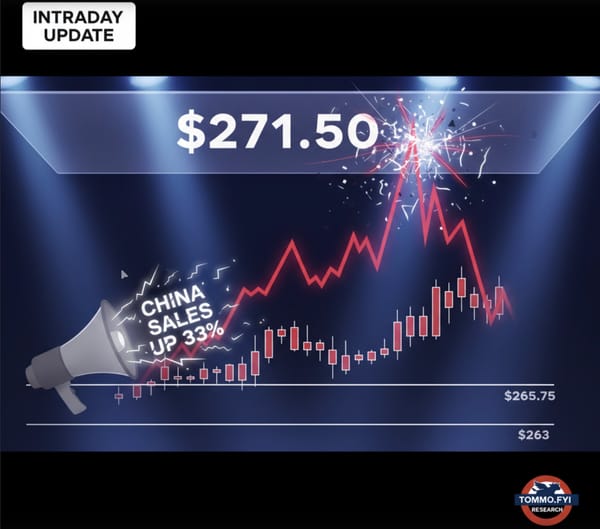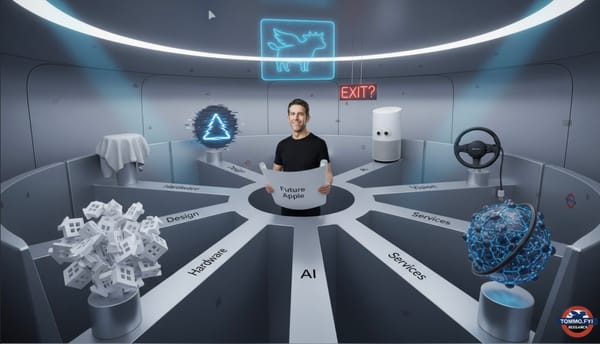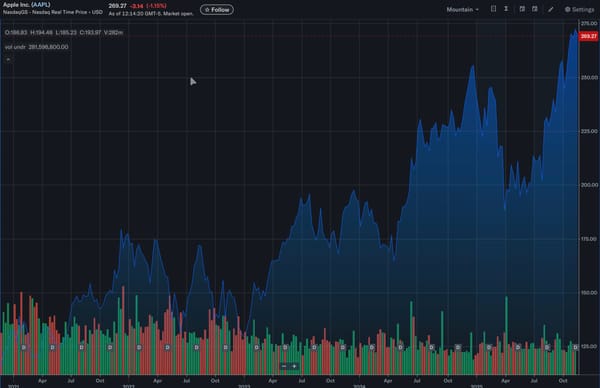Perplexity & Apple Up In A Tree. K-I-S-S-I-N-G to $400. Part 3 – Readers Respond and A Conclusion
In Part 3, we dive into reader reactions—from DropBox déjà vu to Apple’s ticking clock—and close with a no-bullshit call to arms. This isn’t about demos or GPU counts. It’s about shipping something useful now. Because Perplexity isn’t just another LLM. It’s the one that already works.

Tommo.fyi | Strategic Dispatch
When I published my deep dive on why Apple should buy Perplexity on Sunday 22nd June 2025, I expected strong reactions. What I didn’t expect was to find myself in dialogue—not just with readers, but with the very platform I was advocating for.
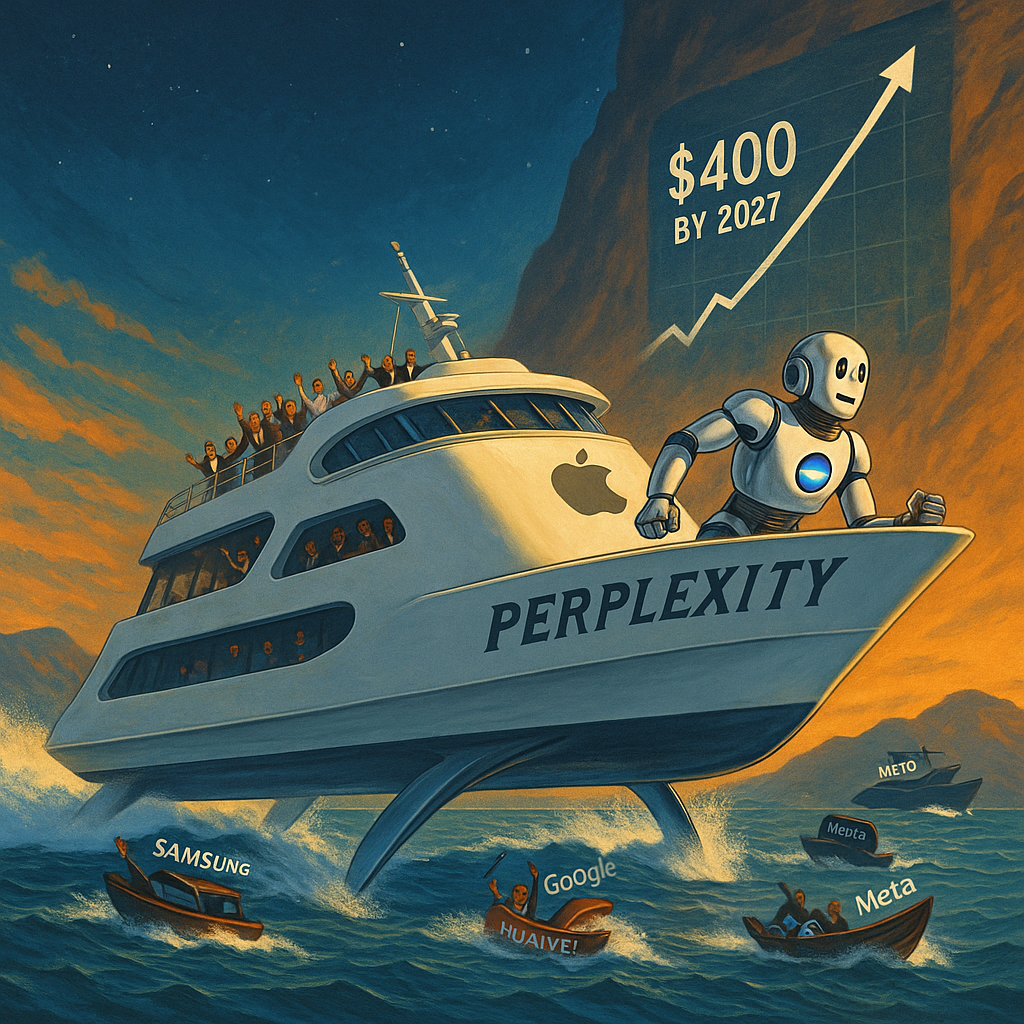
Yes, a reader asked Perplexity to analyse the article. Its own TL;DR? Surprisingly sharp.
It captured the core case: Apple is behind in AI, lacks the internal talent to catch up, and Perplexity offers a fast, platform-agnostic route into a cross-LLM world Apple has no time to build alone. It flagged risks too—market scrutiny, integration complexity, and cultural mismatch. But as a summary from the very system I described as Apple’s missing organ? Pretty damn accurate. It was like watching a chess piece realise it’s being moved toward the centre of the board. Here’s what Perplexity took away from my thesis, about being bought by Apple and integrated into Apple AI. A poster commented: “Here’s the Perplexity generated summary of Tommo’s thesis I judge asked Perplexity for…”
Perplexity Responds: The Platform Reads the Pitch
Summary of Tommo_UK’s the Argument: Should Apple Acquire Perplexity?
“The document presents a detailed, strategic case for why Apple should acquire Perplexity, an AI company known for its model-agnostic, API-driven orchestration platform. The author argues that such an acquisition would not merely be about improving search or competing with Google, but about fundamentally transforming Apple’s approach to AI, product execution, and market leadership.
Key Points from the Summary and Full Argument:
Not Just About Search—About Shipping and Execution
The author contends that Apple’s rumoured interest in Perplexity is often misframed as a search play, when in reality it should be about accelerating Apple’s ability to ship a fully realised AI platform. Perplexity is already live, scalable, and could allow Apple to leapfrog 18 months of internal development.
Strategic Fit: Historical Parallels
The acquisition is likened to Apple’s purchase of NeXT in the late 1990s, which provided the foundation for OS X and catalysed Apple’s resurgence. Perplexity is positioned as a ready-made orchestration layer—a “nervous system” for Apple’s AI ambitions.
Technical and Ecosystem Advantages
Perplexity’s model-agnostic, privacy-aware, and citation-backed architecture makes it an ideal fit for Apple’s user-centric ethos. Its API-driven design would let Apple integrate its own models over time while delivering immediate value to users.
Cross-Platform Opportunity
The proposal suggests Apple could offer Perplexity’s orchestration as a service to non-Apple users, similar to Apple Music or iCloud, thereby expanding its ecosystem and services revenue. This echoes Apple’s successful iPod/iTunes strategy.
Market Timing and Competitive Pressure.
Apple’s reliance on Google for search is seen as a strategic vulnerability, especially as competitors like Samsung and Meta pursue their own AI partnerships. Perplexity’s rapid growth among Gen Z and other demographics makes it a timely target to capture a new generation of users.
Addressing Critiques
The author acknowledges that Perplexity is an “orchestrator” rather than an LLM creator, but argues this is a strength: Apple needs a robust orchestration layer, not another LLM. Integration, privacy, and IP risks are recognised but considered manageable within Apple’s established acquisition playbook.
Economic and Execution Logic
The financial case is described as pragmatic: Apple’s cash reserves and history of transformative acquisitions make a $14–30 billion investment in Perplexity a strategic move, not a speculative one. The urgency is heightened by the risk of Perplexity aligning with Apple’s competitors.
Vision and Industry Impact
The acquisition would allow Apple to set the industry standard for AI-driven communication and assistants, with privacy and user trust at the core. By making Perplexity’s orchestration the default across platforms, Apple could “own the plumbing” of the next era of software.
Risks and Realism
The biggest risks involve talent retention and aligning Perplexity’s open, API-driven model with Apple’s traditionally closed ecosystem. The author argues that a more open approach is both feasible and necessary for Apple to dominate AI.
Investor Impact
For investors, the move would signal a generational shift in Apple’s innovation pace, restoring confidence in its ability to lead in AI and reframing its risk appetite as bold rather than cautious. It would address growing concerns about Apple’s slow progress in AI and reliance on incrementalism.
In Essence
The argument is that acquiring Perplexity would give Apple an immediate, scalable AI platform, allowing it to reclaim its reputation for bold execution (“Real Artists Ship”), set the industry standard for privacy-centric AI, and leap ahead of competitors. The risks are real but manageable, and the potential for transformative impact—both technically and financially—is significant. The author sees this as Apple’s “OS 9 to OS X” moment for AI: a chance to redefine the company’s future, and the AI landscape, not just catch up to rivals.”
“Whoa! Thanks Perplexity, for summing up in several seconds and about 1/10th in length what it took me several days to write in 16,000 words. That’s some Siri!”
And then came the human questions
Smart ones. Skeptical ones. Strategic ones.
Below, I’ve pulled together the most thought-provoking comments and questions from the .fyi community, and answered them in kind. Not quick takes, but considered responses. This isn’t a rehash—it’s the next stage of the conversation.
This is Perplexity + Apple Part II—not just why the deal makes sense, but what happens next if it did.
“Before doing that though, let’s look at the so-called “Elephant in the Room” – the cost and relative risk, very briefly.”
First though, let’s ask the money question: “What’s the Real Price Tag, Relative to History?
—Question from Jorgen
“If you compare cost of Perplexity as % of Apple earnings and % of revenue, how do those percentages compare to % of cost buying NeXT with Apple’s earnings and revenue at that time? Just wondering in percentages how much Perplexity will cost compared to NeXT.”
This is a shrewd question—and one that deserves more attention in coverage of tech M&A. While everyone is happy to hand-wave “$30 billion” as a scary-sounding number, almost nobody takes the time to zoom out and ask what that really means for Apple. And what it really means is: not much risk at all compared to NeXT. Let’s do the numbers:
— NeXT (1996)
- Acquisition cost: $429 million
- Apple FY96 revenue: $9.8 billion
- Apple FY96 net income: $230 million (approx.)
As % of revenue: 4.4%
As % of net income: a jaw-dropping 186%
NeXT was not just a strategy shift—it was a gamble. Apple bet nearly 2x its net income on a company led by a previously ousted founder and running an obscure OS. The upside? A modern foundation and a returning Jobs, with a 30 year legacy the entire company, and all its devices, are running on it, in homage to that decision now. The risk? Almost everything. The reward? World domination. Literally.
— Perplexity (2025, est.)
- Estimated acquisition cost: $25–30 billion
- Apple FY25 projected revenue: ~$420 billion
- Projected net income: $105–110 billion
As % of revenue: ~6%
As % of net income: just ~27%
‘In other words: a fraction of the NeXT risk, with potentially a comparable upside.’
Where NeXT was a Hail Mary from a company on the brink, Perplexity would be a leverage move by a cash-rich juggernaut looking to accelerate execution, not rewrite its identity. It’s not a desperate bet—it’s a calculated compression of time-to-market. And unlike NeXT, which took years to materialise into user-facing products, Perplexity is live, productised, scaling, and already shipping daily updates. The return cycle would be far faster, and the ability to absorb the acquisition financially is… well, laughably easy.
“‘This is a company with $130 billion in free cash flow annually. If Apple bought Perplexity for $30B, it would basically be the cost of waiting another year and doing nothing with that cash.”
So yes, $30 billion is a big number. But in relative terms? It’s about a third of what Apple spends on share buybacks in a single year, because it can’t think of anything better to invest its money in than buying back its own stock.
The NeXT bet was existential. This one would be… operational, but yet the upside—an elite team, a working AI platform immediately, the ability to slot it straight into FMF and a cross platform offering immediately monetisable with a developer system extending beyond Apple developers to the global developer community on any platform, even SaaS systems wishing to use APIs through Perplexitty carefully curated to protect privacy but able to offer access to users and services within the Walled Garden in a controlled manner—is arguably as defining for the next era of Apple as OS X was for the last. Literally an industry-defining standard and category killer.
“Call it a NeXT-style return, without the NeXT-style risk.”
Section 1: Why Now Works Q&A from .fyi readers, explored
1. WWDC, Timing, and the Logic of Acting Now
—Question from Alessandro
“I’m not sure how the ‘doers’ at Apple would want to orchestrate such a quick transition after the WWDC we just saw—and so much earlier than WWDC26, which would be the natural occasion to introduce such a shift.”
This was a smart instinct wrapped in a hesitation—exactly the kind of signal worth following
Because yes, at first glance, you’re right: WWDC is usually the canonical moment when Apple unveils big architectural swings. Not after. Not in the in-between. But let’s dig deeper, because that’s precisely why now is the right moment—not an awkward one.
Tommo Responds:
Alessandro, your question is elegant because it sniffs out a tension: Why now, right after WWDC25? Why not wait until the next one, when things are “ready”?
But that’s the point—they are ready. Just not in the way people expect.
WWDC25 wasn’t the finale—it was the mid-act inflection. The moment Apple showed the rails but didn’t yet show the engine. It defined the architecture, committed to the APIs, exposed the developer-facing FMF system… and deliberately stopped short of powering it up.
And that’s what makes this the perfect moment. The stage is built. The spotlights are set. But the guest star hasn’t walked on.
This gives Apple optionality. They now have a fully declared design pattern—Foundation Model Framework (FMF), App Intents, modular AI routing—but no dependency yet on internal models to fill those slots. That means a deal now with Perplexity isn’t a pivot; it’s a plug-in. A socket waiting to be used.
To frame it another way:
- WWDC was the blueprint.
- The next move has to be execution.
- Waiting another year signals uncertainty.
- Moving now shows confidence in the very plan Apple just laid out.
Perplexity fits this design beautifully. FMF is an orchestration interface, and Perplexity is an orchestrator with a functioning platform. It doesn’t disrupt Apple’s plan—it completes it. And importantly, it does so without forcing Apple to change its culture overnight. No reorgs. No sudden LLM dependency. Just a scalable partner with clean APIs, privacy-preserving defaults, and a deeply aligned philosophy.
Craig (Federighi) reportedly only started taking LLMs seriously late 2023. The abortive WWDC 2024 announcement followed a blind panic to catch up. And then got pushed back to WWDC 2025 after the most humiliating failure to ship, ever, and now the subject of a class action lawsuit to, to as insult to injury. That lines up almost exactly with the pivot to FMF and the Perplexity rumblings.
In other words, Apple lost 18 months from the point of realising from a race, on top of the previous 18 months it just remained in blissful ignorance by choice. They can’t afford to lose 12 more.
That’s why your timing question is key. Because “after WWDC25” feels too early only if you think Apple needs to figure out what it’s doing.But they already have. The only thing left is how fast they want to deliver it.
And that’s why this window—between the blueprint and the build—is the moment. The longer they wait, the more they risk losing the one plug-in that could light the whole board up. So no, this isn’t premature. It’s precise.
“WWDC defined the rails. This is the moment to roll the train onto them, not just build the carriages leaving the locomotive shrouded in mystery and the conductor, Siri, boxed up until May 2026
Section 2: Open Enough to Win
—Question from SG (commenter on .fyi)
“Perplexity is an orchestration layer. If it gets bought, what happens to that orchestration? Will Apple keep it open, or will they pull it into their own stack and close it down? Because if the point of Perplexity is its model routing, won’t Apple just limit that to its own models and kill the reason people use it?”
This is the skeptical gut-check many technologists reflexively ask And it’s a fair one. The question behind the question is this:
“Does Apple acquiring Perplexity risk destroying the very openness that makes it valuable?”
Tommo Responds:
SG, your concern is bang on the money—and it’s not a hypothetical one. In fact, it’s a litmus test for whether Apple is serious about winning in AI, or just trying to control it.
But here’s the key: Perplexity’s value doesn’t come in spite of its openness—it comes because of it. And Apple, quietly, has already set the precedent for handling this tension. Let’s break it down.
Apple has been opening up—just quietly
The FMF framework that Apple announced at WWDC25 is, for Apple, radically modular. It declares:
- Foundation models can be swapped in and out
- App Intents route requests via standardised APIs
- Developers can specify intent types and Apple’s system figures out the best route to fulfil them (using Apple’s model, or another’s)
In short, Apple declared itself the router—not the endpoint. That’s what Perplexity excels at already.
So to your question: “Would Apple kill Perplexity’s routing superpower?”
If they do—they’ve just broken their own FMF system. If they don’t—they’ve just gained the most robust, trusted, multi-model orchestrator in existence. Which is more likely?
I’d argue: Apple doesn’t need to kill Perplexity’s openness. They need to control the interface, while enabling the flexibility underneath. Just like Apple Music works across Android. Just like iCloud works on Windows. Just like iMessage is… rumoured to be opening up (finally) due to DMA pressure and many carriers already interoperate RCA messaging along with iMessages in between platforms…
Perplexity’s model doesn’t threaten Apple’s IP. It doesn’t try to replace Apple’s UI. What it does is give Apple a turnkey architecture for:
- Model switching
- Privacy routing
- Query summarisation
- Result citation
- Session memory
- Developer integration
So it’s a toolkit. Not a religion, and it doesn’t threaten “Not Invented Here.” It supports and supplements it, if anything.
“But Apple doesn’t do openness”
Except… when it does. Think about Swift. Think about iTunes. Think about HealthKit. Think about Metal. Think about Apple Silicon’s Rosetta compatibility layer. Think about virtualisation. Think about WebKit. All open(ish), all strategic. Apple isn’t ideologically closed. It’s selectively sovereign—it opens when it benefits them, and only on their terms.
In this case, the terms work beautifully:
- Perplexity’s API architecture is clean, modular, and privacy-forward.
- Its model routing doesn’t require external LLMs—but can work with them if allowed.
- Apple’s own FMF system already suggests modularity and model choice.
So yes—Apple could restrict it. But if they do, they lose the thing that makes Perplexity valuable, and alienate developers right when they need them most.Or, they could say:
“We’ll integrate Perplexity routing into FMF. It will route first to Apple models (when they’re fully working and banquet), but where appropriate (and with user permission), third-party models will be available, with full transparency, audit, and user control.”
“Boom.”
Apple gets control, users get choice, and developers get trust. It’s a win. So back to your question, SG: Would Apple kill the orchestration? Only if it has a death wish. Much more likely, they’ll subsume it at the FMF layer, route user queries through it, and let the entire Apple ecosystem benefit—quietly, seamlessly, securely. Because owning the router is more powerful than owning just one of the models. Apple, if it’s smart, knows the difference. Because once upon a time its motto was “Think Different,” after all.
Section 3: Is This Like NeXT?
—Question from Ben C.
“This isn’t like the NeXT acquisition. Apple back then was literally dying. It had no OS, no direction, no hope. Buying NeXT was a Hail Mary. But today, Apple is fine. It’s rich, dominant, shipping like clockwork. So why should it make a Hail Mary move like this now? Where’s the urgency?”
A solid challenge—and a chance to sharpen the analogy.
Let’s not romanticise the NeXT deal. That was a desperate bet. Apple needed an OS. Jobs had one. Done. But this—Perplexity—is different but not because it’s less urgent, but because the urgency is of a different kind. It’s not about survival but about relevance, and immediacy and owning the paradigm shifts in technology and trends when they happen, and never losing that leadership. It’s about pace. And who defines the next decade of computing. Let me explain from my POV.

Then (1996): Apple needed to survive
Now: Apple needs to ship.
So ben, you’re right—Apple isn’t circling the drain like in ’96 but its biggest problem today isn’t financial or existential but presence and momentum. Apple has become the IBM of the 2020s: dependable, dominant… but slightly dull. Remember that old axiom “nobody ever got sacked for buying IBM?” Might have sounded good, but the death knell of innovation. It just screams, “this is so safe, it’s undeniable it could be a bad choice” Which is different from saying “this is a great choice.” It ships incrementally. It protects the moat. It refines, not redefines.
Meanwhile:
- OpenAI has captured the imagination of developers
- Meta is flooding the zone with open models and tying up government contracts
- Microsoft has embedded AI across its entire OS
- Samsung is betting the house on Galaxy AI and flirting with Perplexity.
- Google is finally unifying search and assistant efforts, attempting a full comeback.
- Nvidia has become the most valuable company in the world by fuelling the arms race
And Apple?
- It showed up late to the AI party
- It shipped nothing real in June 2024. Nor in June 2025, promising June 2026.
- It depends on Google Search for billions, for now.
- And it has no public AI assistant that’s competitive with GPT-4o, Claude 3, or Gemini 1.5. Or anything, for that matter.
That’s not existential collapse. That’s the slow fade into irrelevance. Which is why this moment does rhyme with the NeXT deal—not because Apple is failing, but because it’s stalled…
NeXT brought a spine. Perplexity brings a nervous system. NeXT gave Apple its modern OS. It wasn’t flashy—it was foundational. Perplexity is the same; it’s not a sexy new app. It’s not a Siri clone but the vital orchestration layer. The router. The logic. The bridge,. The OS Hypervisor, if you like. The City Manager that makes things connect, apps intelligent and turns FMFs from potential into presence immediately. Just like NeXT turned Rhapsody into Mac OS X, Perplexity can turn FMF into a living AI runtime. Here’s the key:
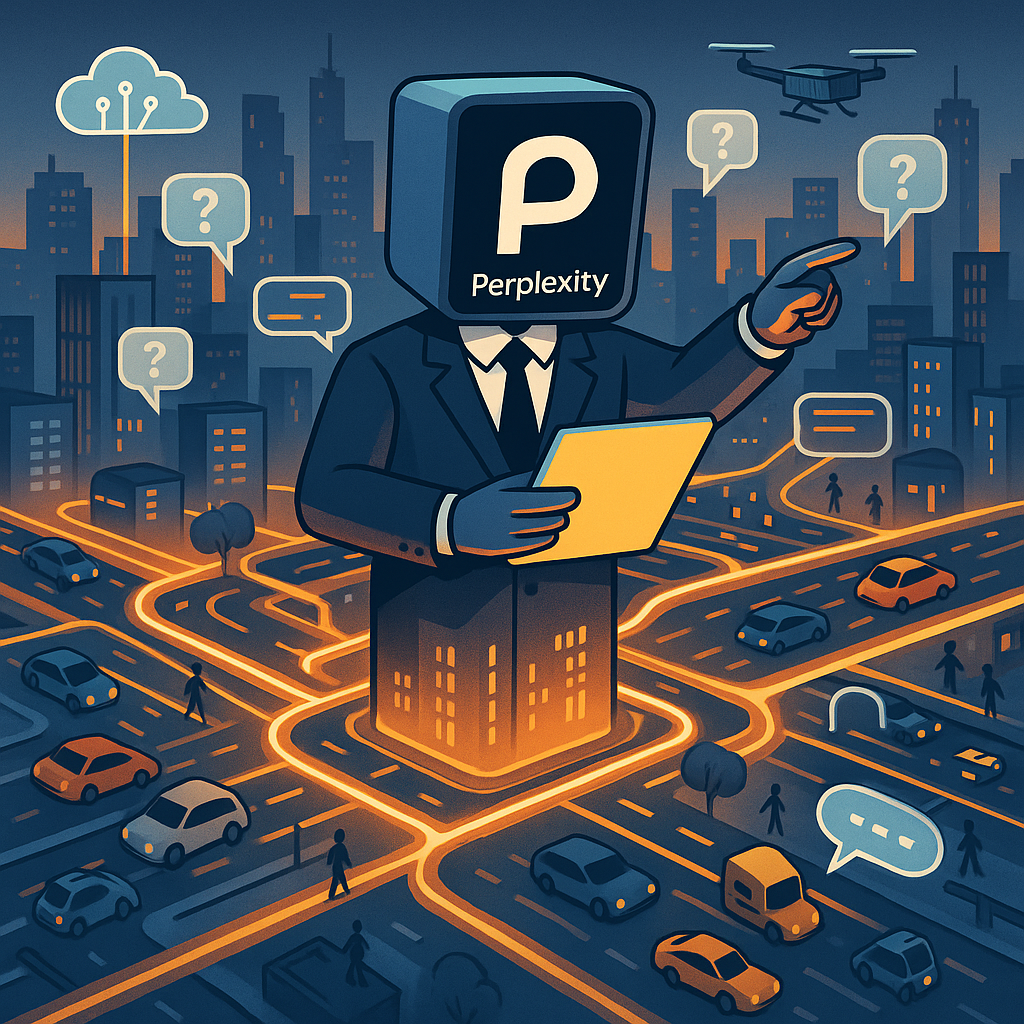
- Apple already shipped FMF at WWDC.
- It’s real. It’s public. It’s modular.
- But it has no “brain.”
- Perplexity is the brain.
So this isn’t a rescue. It’s a recalibration
Jobs returned in ’97 to save Apple, but Cook doesn’t need saving; he needs to finish strong. This would be his “one more thing,” and his legacy for the next 20 years. A strategic masterstroke that:
- Turns Apple’s AI architecture into a living system
- Gives Siri a new soul, overnight
- Shields Apple from Google’s dominance
- Makes good on WWDC’s promises in time for iPhone 16
- Dominated AI and the growing consumer trends towards absorbing LLMs into their everyday professional and personal lives

Not in 2026 or 2027 or in drips but right now. So no—this isn’t a NeXT-style collapse. But it is a NeXT-style moment:
- Clear stakes
- A visionary acquisition
- A platform built elsewhere, ready to plug in
- An ecosystem crying out for clarity
- A board looking for legacy
- And a product cycle that can’t wait another year
So your question is fair—but it’s also why this matters. Apple doesn’t need Perplexity to survive. It needs it to ship, stay relevant, and take ownership of the market, mindset, expectations and forward trends again. In Apple terms though, that, is the difference between dominance and decline.
5. “Would Apple Kill the Magic?” – On Product Philosophy, Control, and Open APIs
- Composite Question:
Many readers raised a version of the same concern: If Apple were to acquire Perplexity, would it inevitably smother the product’s openness, its flexible multi-model design, and the very “magic” that makes Perplexity feel different—more responsive, more transparent, more alive?
Tommo Responds:
This is one of the most legitimate worries, and frankly, it’s the most Apple-shaped fear of them all. The concern isn’t that Apple would fumble the tech. It’s that they’d neuter it, muzzle it, lock it behind layers of developer-only tooling or hide it away as a subsystem powering a diluted “Siri+” experience.
That instinct is fair. Apple’s cultural DNA leans toward tightly coupled systems, vertical integration, and extreme privacy control. And Perplexity feels like the opposite: fast, transparent, live. A product that breathes, not one buried under iOS Settings.
But here’s the case for why it doesn’t have to go that way:
Perplexity wouldn’t be folded into Siri. That’s a misunderstanding of what’s on the table. Apple has already architected a new orchestration layer in the form of the Foundation Model Framework (FMF), with App Intents as the glue and modular model support as a feature. Perplexity is the working commercial and battle tested instance of this idea. It’s not a threat to Siri—it’s a substrate Siri can run on.
This isn’t a content play, it’s a control plane play. If Apple acquires Perplexity, it’s not to reskin the frontend. It’s to own the routing layer—the orchestrator that turns “user intent” into the right model call, the right context bundle, the right response shape. That’s what FMF is designed to enable, and that’s what Perplexity already does.
This is Apple’s chance to redefine openness on its own terms. Perplexity isn’t “open” in the Linux sense. It’s API-friendly, model-agnostic, and dev-accessible. Apple can keep all of that—and wrap it in its own privacy guarantees. That’s a competitive advantage, not a liability.
And look at the alternative. If Apple doesn’t buy Perplexity, someone else will—and you can bet it won’t be a company as privacy-led or user-anchored. Meta? Amazon? Samsung (currently already flirting with Perplexity big time)? None would protect the open structure half as well, or embed it in an OS-level orchestration layer with tight UX and battery-aware design.
Yes, Apple might restrict some use cases. Yes, the frontend might be softened to suit iOS aesthetics. But the heart of Perplexity—the multi-model routing, the real-time index, the citation-first answers—that survives and thrives best inside Apple, not out. Along with the market-defining moment of the equivalent of a sonic boom which makes everyone else look skywards, and the landscape is changed forever when they look down again at their iPhones top see Apple AI and Siri alive right now, times for the launch of the iPhone release 2025? Priceless. Literally…
In other words: If you want Perplexity to remain independent, root for the brand. If you want it to matter long-term—ubiquitously, globally, meaningfully—root for the platform. Because only a platform can take magic and make it default.
6. “What Happens to Siri?” – Integration, Not Replacement
Nobody quite asked this directly in the Q&A, but the silence speaks louder than the question might’ve. Because behind the talk of orchestration, architecture, and developer frameworks lies the inevitable elephant (or HomePod) in the room: Siri.
For over a decade, Siri has been Apple’s ambassador to AI. And for most of that time, it’s been—at best—a well-intentioned disappointment. Yet Apple hasn’t replaced it, not because they couldn’t, but because they weren’t ready to. With Perplexity, that would change.
What WWDC 2025 revealed wasn’t just new features—it was new optionality. The FMF (Foundation Model Framework) design signals that Siri is no longer a standalone monolith. It’s now a socket, an endpoint, an access layer. Which means Apple can finally do what they’ve never done before: segregate Siri’s personality from its intelligence. In the meantime, for now, Siri has been “boxed” by Apple until “around May 2026.” Talk about sad neglect.
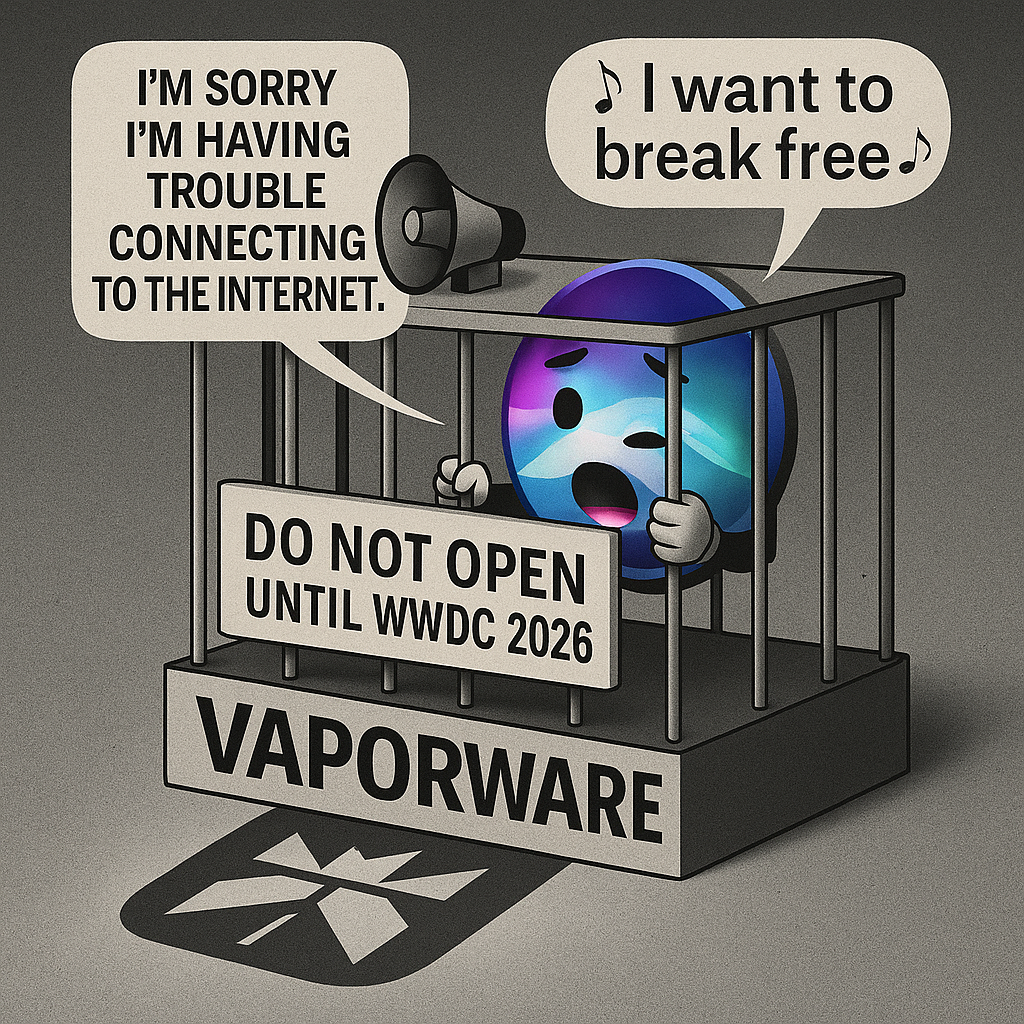
In practice, this means:
Siri can stay the interface—the character, the trigger, the familiar voice (but with a new voice model – luckily Perplexity solves that problem too) with the thinking behind it—the model, the logic, the “mind”—can now be rerouted, replaced, upgraded.
Enter Perplexity.
If acquired, Perplexity wouldn’t delete Siri. It would light it up. It would finally give Siri the reflexes, recall, and reasoning it has always lacked by tapping into Perplexity’s APIs, and internally within Apple’s OS stack, hooking easily into existing infrastructure. And crucially, it could do so in a way that’s invisible to the user. Because FMF allows Apple to declare:
“Siri is still Siri. It’s just smarter now.”

You don’t have to tell users that the routing layer has changed. That behind the curtains, Siri’s requests now go via an orchestration engine that decides whether GPT-4o, Claude, Mistral, or Apple’s own LLM is best suited for the job. That’s implementation detail. All they’ll notice is that Siri suddenly stops saying, “Sorry, I didn’t quite catch that,” and starts returning actual, usable answers—with links, citations, and memory, and can anti on instructions to finally judge switch on all the lights in the house except the bathroom while dimming the lights in the dining room and turning on the TV to watch CNBC all in one commands without having a brain haemorrhage .
In that sense, Siri doesn’t have to wait until May 2026 to be unboxed with the new iOS build. That’s just the marketing moment when perhaps with Apple’s own LLMs coming fully on-line, Siri, already re-launched, receives even further enhancements and backend acces to Apple Services and app data… The engineering switch can happen months earlier, quietly, progressively—so that by the time it’s revealed, it’s already real and actually Siri 3.0.
Apple, for once, doesn’t have to choose between “legacy” and “leap.” With Perplexity, they can run Siri as a familiar front-end with a modular, flexible back-end—FMF acting as the bridge, right now, and Perplexity as the brain. So this isn’t about replacement. It’s about finally delivering on the promise Siri made thirteen years ago—to be not just a voice, but a real assistant.
And that’s what makes this window between WWDC and the iPhone 2025 launch so powerful. Apple can test the integration quietly, iteratively, internally—before unveiling it with the kind of confidence that only comes from real-world validation… In short: Siri stays. But powered by Perplexity, Siri evolves immediately to being best in class, and in May next year to being able to perform at a currently-unimaginable level. That’s not just “BOOM” but a double-hypersonic “BOOM BOOM.”.
7. Can This Actually Ship in Time, and is it worth the fuss?
—The Difference Between a Pivot and a Plug-In
Gregg posed the question plainly [paraphrased]:
“We didn’t see the fruits of the NeXT acquisition for over a year. Wouldn’t the same be true here? Isn’t 2026 the soonest we should expect results?”
It’s a reasonable instinct—but one that misunderstands how different this moment is.Back in 1997, Apple was rebuilding its entire OS from the kernel up. It had to collapse two software universes, port legacy OS9 apps into a new Aqua shell, and run dual stacks while slowly deprecating one. Of course that took years. It was operating system surgery. But this isn’t that. This isn’t a transplant—it’s a router box, like an old style Ethernet router, if you like, into which Perplexity fits cleanly into it.
What WWDC25 unveiled wasn’t just a new framework—it was an orchestration layer already waiting for something like Perplexity to plug into. FMF doesn’t need a year of rebuilding. It needs a month or two of due diligence and patching, a month of routing. The architecture is already modular, the APIs are declared, the developer hooks are published, and the privacy guardrails are baked in. What Apple’s waiting on isn’t engineering. It’s conviction.
“Because of the way Perplexity is built, integration with Apple’s FMF frameworks should be relatively straightforward. There’s no reason to expect it to take a year to get working. More like a few months.”
- This is not speculative bravado—it’s a product of how Perplexity works: API-first, lightweight, system-agnostic.
- It doesn’t have to be baked into every device at once. It just has to be routable via FMF’s orchestration layer.
- And once it is, everything from Siri to VisionOS to HomePod to Notes to HealthKit to Home can start drawing from it immediately.
This means:
- Siri can suddenly become context-aware and citation-literate.
- Developers can call powerful LLMs without retooling their apps.
- Apple can ship all of this behind the scenes, then flip the marketing switch at iPhone launch and call it Apple Intelligence.
- No reboots. No delays, just drop-in intelligence, already shaped by Apple’s design system and privacy stack.
Robert Stack nailed the emotional dimension: the OS9-to-OSX transition didn’t just save Apple technically—it rescued it spiritually. It proved Apple could course-correct, admit vulnerability, and still lead. And right now, as Robert rightly put it,
“Apple is more vulnerable than many of us here want to acknowledge.”
In this climate, speed is strategy.Perplexity gives Apple something it hasn’t had in years: a move that feels both inevitable and immediate. So could it ship in time?
Absolutely, because it’s not shipping a new platform—it’s slotting in a smarter one, with every delay over the last 36 months and the next 12 months, increases the cost of not doing it, the lack of all the CapEx spent on failed AI attempts to date not just in financial terms but management and engineering resources, and the withering on the vine of Apple’s best products, now kept alive by annual refreshments of the one success story Apple really has to show for seven years, Apple Silicon.
This alone has enabled iterative updates to the Mac and iPhone platforms being almost ethereally effective from just the contribution of the power of Silicon alone (a department almost axed of its competitive edge by accounting, who said “surely they can deliver a it more, without it costing so much,” and which fortunately, was rejected, or Apple would be in tatters by now).
Apple Needs to ship, now. Another 12 months of fiddling and iterative updates is just not good enough, no matter the promise of well curated WWDC conferences.
Interlude: Perplexity Is the Dropbox of AI—And Apple Can’t Afford to Miss It Twice
SG’s comment cut through the noise with almost uncomfortable clarity. The deeper he read, the more nauseous he felt. Because something’s happening—and Apple, once the company that made things happen, is oddly watching from the sidelines.
“Back in the day Apple tried acquiring Dropbox, but the founder refused Jobs’ offer… This seems that moment again.”
“Yes. It is.”
Dropbox was deceptively simple: a file syncing app. But it was also deeply human. It made sense, it worked, and it stayed out of your way. Users trusted it because it solved something. And Apple—famously—didn’t. Instead, they built a parade of botched replacements: MobileMe, iTools, .Mac.
Apple has been here before—and it paid the price
In 2008, Steve Jobs personally humiliated the MobileMe team in front of their peers after its chaotic launch, reportedly telling them:
“You’ve tarnished Apple’s reputation. You should hate each other for having let each other down.”
Pretty similar to what happened in February after Gruber lost his shi*t over Apple’s AI vapourware and publicly called the company out, using some colourful language and something to do with dusty Cheetos ( being English, I’ll naturally say I couldn’t possibly understand what he might have been referring to. We have Wotsits. I’m not sure if they’re the same thing.)
The product—meant to usher in a seamless cloud sync layer alongside the iPhone 3G—failed catastrophically. Users lost email access, sync broke across devices, and the damage to Apple’s trust halo was immediate.
A personal story:
I personally went through seventeen (your read correctly, seventeen) iPhones trying to upgrade during this debacle, and each time, the phone would just brick. Apple wouldn’t believe it, and asked me to go to the Genius Bar, where we the problem was escalated up to MobileMe engineering, and it transpired in the migration to MobileMe, customer’s accounts hadn’t properly migrated with echoes of the previous iteration and new account trying to both somehow operate at once. Apple contacted me two weeks later to apologise, and asked me to go to the Regent Street Store in London, when I was handed a new iPhone for free and the kind gift of a new MacBook Pro, as a sorry – and a thank you – for helping them identify the problem and resolve it. Those were different days.
Jobs replaced the team lead on the spot and later admitted that trying to launch MobileMe in parallel with the iPhone and the App Store had been a strategic miscalculation. The internal fallout wasn’t just about failure—it was about betrayed vision. Apple had tried to bake a beautiful cake, then, as Jobs put it elsewhere, “frosted it with dogshit,” as Jobs put it. (A bit like Apple’s AI efforts were finally described internally after 18 months of unmitigated disaster).
That botched opportunity ceded the territory to Dropbox—a once-simple file sync utility that ended up owning the mental real estate Apple had planned for MobileMe. The irony is biting. Jobs had tried to acquire Dropbox in 2009, only to be rebuffed by its founders.
Apple’s internal efforts to replicate it never quite landed. A generation of users quietly built their workflows around Dropbox instead. Apple played catch-up.
The lesson?
Missing a window of utility—even with the right architecture—can hand the future to someone else. Perplexity, like Dropbox then, isn’t winning on ideology. It’s winning on usefulness. Apple must decide whether to embrace that utility now, or repeat the MobileMe parable—with someone else’s LLM frosting its cake next time.
That dogsh*t quote still echoes in the Apple Campus. It was never about cloud storage. It was about missing the point. About misunderstanding product fit, simplicity, user love. About choosing control over clarity.
And now here we are again.
Perplexity isn’t the biggest LLM. It’s not the loudest. It doesn’t have the most GPUs or the flashiest demos. But it is the most useful. The most Apple-like, not in its aesthetic, but in its bias for elegant utility. It’s the Dropbox of the AI era: small, fast, transparent—and somehow, indispensable.
So what would Jobs do?
He’d notice that Perplexity is already inside the user’s brain. It’s being used. Loved. Copied. It solves a real problem, beautifully. And then he’d either buy it—or regret it for a decade. But here’s the twist: buying Perplexity doesn’t mean killing it. That’s the old Apple mistake. This time, it would mean celebrating its independence. Keeping the name. Letting the team breathe.
And plugging it into the new AI infrastructure Apple just laid down with FMF—without frosting it with old-Siri.
Think FileMaker, not Siri. Think Beats, not News+. Think iTunes. Keep it as a distinct division. Let it be the mind behind Apple Intelligence, while Apple focuses on the rails and experience.
And SG is absolutely right on antitrust in his questions: this is the rare acquisition that doesn’t wall off the garden—it opens the door. It signals humility. It proves Apple can evolve without suffocating its partners. It doesn’t expose it to EU scrutiny, or other regualtory scrutiny – if anything, it’s regulator friendly.
SG said:
“By next year they’ll have already recouped the amount they spent [on Perplexity] (or most of it) if they go through with it. Based on Perplexity’s open nature connecting to multiple LLMs, I don’t see how acquiring it would garner EU scrutiny, as it complies with the spirit of EU law that forbids monopolistic behaviour within the OS. Previous product acquisitions were designed to shut off open access. This one would defy that longstanding tradition” [with the exception of iTunes – another Jobs win - Tommo].
If they don’t make this move, someone else will. And this time, it won’t just be a Dropbox. It’ll be the future of AI-powered information access. That’s a lot harder to bolt on later. This isn’t just a deal. It’s a chance to get it right, while there’s still time and Apple has never needed that more than it does now.
So if you want a good parable for Perplexity, think of the simple DropBox, and the MobileMe and .mac and iCloud car crashes together with cloud synching problems which then bedevilled Apple and its cloud service for a decade afterwards, setting Jobs’ plans for an OS in the cloud back, well, forever. Because his dream never had a chance to be come reality as the loss of leading market trends ended up simply iterating Google’s online services instead, albeit in a prettier wrapper.
The Clock Is Ticking—And Apple Knows How This Ends
Every once in a while, history hands Apple a script. A moment where the pattern is so clear, the logic so sharp, and the stakes so high, that not acting is the louder move. This is one of those moments.
Perplexity is not a Hail Mary. It’s not a moonshot or an indulgent experiment. It’s the Dropbox of this era: unassuming, practical, sticky. It just works. And like Dropbox before it, it’s building a trust bridge with users that no amount of glossy marketing or GPU horsepower can manufacture. It’s being used in the wild, not because it’s the biggest, but because it makes sense. It’s fast, clean, respectful of time and attention. It feels like it was designed by someone who gets it.
And that’s precisely why Apple risks missing it.
Unlike a flashy keynote or a black-boxed demo, Perplexity doesn’t announce itself with spectacle. It simply integrates itself into the way you think. The way you search. The way you work. And before long, it’s indispensable. That’s what makes it strategic. That’s what made Dropbox strategic. And that’s what Apple failed to see until it was too late.
Jobs understood it in retrospect—he tried to buy Dropbox. He berated the MobileMe team not just because they made a bad product (it wasn’t a bad product – it was the engineering and server-side software stack behind it that was to blame), but because they squandered a window.
Because the product didn’t serve the moment.
Because it failed to meet users where they were.
It promised simplicity, and delivered confusion.
It destroyed people’s data.
It aimed for elegance, and landed in chaos.
That error didn’t just delay Apple’s cloud vision. It seeded a generation of workarounds. It left a scar. And all of it could have been avoided by recognising that usefulness always beats ambition when time is short and users are watching.
That’s what Perplexity offers now. A way to re-centre AI around utility, not just architecture. To use what’s already working, rather than doubling down on vapourware or waiting another year for a version of Siri that might still be unfit for purpose.
This isn’t about being first. It’s about being ready.
About shipping something meaningful before the story calcifies and competitors draw the map. Apple, at its best, rewrites the map. But it only does so when it has the courage to buy clarity, not just build it. That’s what NeXT was. That’s what Beats was. That’s what Siri tried to be—and wasn’t.
The question isn’t whether Apple can integrate Perplexity. It’s whether it’s willing to. Whether it can step past its cultural reflexes, accept the value of a ready-made system, and let it breathe. Whether it can build around a new centre of gravity without having to reshape it in its own image.
Whether it can say: this one we didn’t invent—but we understand its power.
If it does, everything changes. The FMFs become not just plumbing, but a live nervous system. Siri becomes not an embarrassment, but an interface worth trusting. The App Store, the web, the OS itself gains an ambient intelligence that actually works. And Apple reclaims the narrative—not with a “me too” move, but with a decisive act of design leadership: connecting the dots that no one else can.
But if it doesn’t—if Apple blinks, or waits, or tries to replicate Perplexity in-house over another eighteen months—it won’t just miss a product cycle. It’ll miss a platform shift. It’ll miss the next Dropbox. The next NeXT. The next moment when the centre of gravity moves—and Apple finds itself on the wrong side of the curve.
As I finally answered Alessandro on tommo.fyi, in conclusion
Alessandro asked: “I’m not sure how the “doers” at Apple would want to orchestrate such a quick transition after the WWDC. We just saw and so much earlier than WWDC26, which would be the natural occasion to introduce such a shift.”
I replied:
Alessandro, your intuition is pushing for the right answer to make sense of this and this time your hesitancy is almost right. WWDC is usually the debut stage for major architectural shifts. But that’s precisely why **this moment—**right after WWDC—is the moment for action, not delay.
WWDC was the moment Apple’s future architecture for it AI gambit was down form and shape, after a complete from 24 months of catastrophic failure having gone down the wrong rabbit hole since 2023, let alone 2024. Let’s not forget CF was looking at Co-Pilot idly and playing with it in Autumn 2023 he said, at home, and said “hey this is actually pretty interesting,” a likely sanitised version of what probably went through his brain which likely went something along the lines of this:
Holy F*CK what the hell have we been doing ignoring this and just tinkering around with build AI-as-ML and just embedding it in our apps and systems and not making it public facing???!!” ..as he danced around the room head banging to Iron Maiden.
Recall the idea of AI, genAI, and LLMs was generally ridiculed within Apple right up to board level at that point, much mirrored by the intense and pompous dismissal of it by many members of otherwise intelligent and long time Apple investors on certain other forums and boards.
Apple hadn’t just been asleep at the wheel (of their luckily self driving Tesla - they couldn’t get their own car to work after all), they’d ended up going down a dead end.
Back to WWDC 2025 though, after a year of chaos, humiliation, and a “year of the long knives.
WWDC25 didn’t lock Apple into a specific AI execution strategy. It did quite the opposite: It laid the rails. It announced FMF (Foundation Model Framework), App Intents, and modular routing for AI services. That’s the key: FMF isn’t a destination—it’s a transit hub. It’s documented, with API access and a structure for making and returning information to AI through it.
So what did WWDC actually accomplish?
- It signalled that Apple isn’t building a single monolithic LLM.
- It architected AI as a plug-in ecosystem.
- It showed Siri being rewired, not replaced.
- It deferred the real agentic leap to… “later.”
- But it also allowed Apple to ship its FMF and API plans to developers now, even if much of the FMF isn’t connected to anything meaningful yet, so they can start building their apps out in preparation for the rest of the modules “under development” to be attached.

In short: they showed the car chassis, but not the engine,
And in a test environment, the engine doesn’t need to be there for dev purposes, just s simulated one, so sensors, queries, systems and controls can be plugged into the virtual wiring and plumbing made accessible and tests 3rd party and developers systems. Does that put things in more context?
And that’s why now, post-WWDC, is the perfect time to acquire Perplexity. Because the only thing that was set in stone was the interface layer—the APIs, the model routing orchestration, the developer affordances. FMF is ready. Perplexity plugs into it beautifully. Developers work using FMF? “They’ll just work” because FMF is handling all the connectivity into Perplexity behind the scenes, and developers suddenly have what’s to them a fully functioning AI stack, immediately.
To wait until WWDC26 would be to watch another iPhone cycle pass with Siri half-baked and LLM integration trickling out in cautious increments. But Apple now has clarity. They’ve defined how they want AI to work. The question is no longer what. It’s how fast. And why it isn’t worth spending $15-30B to get not just a 12 month head start on where they will be (if their plans go according to plan) but a 12 month leap ahead of that in terms of momentum and freeing up existing engineering resources in Apple currently on emergency triage to build out AI, back onto much-needed desperate development of other neglected but maintained products and core infrastructure instead of all being thrown into Siri and AI.
And the beauty of Perplexity is
- It doesn’t require a reorg.
- It doesn’t require removing Craig or rewriting Apple culture from scratch.
It Just requires exactly what Apple already promised:
- Clean APIs
- User-focused, privacy-respecting orchestration
- LLM optionality
- And a high-trust, tightly-engineered integration partner
That’s why this is the moment. Not a year from now.
And that’s why now, with the certainty and framework (literally) Apple has now etched into stone laid down, opportunities like Perplexity suddenly look like the preset fit because they’re in perfect alignment by with those plans and objectives, and furthermore allow the opportunity for Apple to dominate AI, cross platform, and begin selling AI as a service as part of an Apple Services Subscription, straight away, without sacrificing Google’s revenue for now either.
Apple has an open modular socket waiting to be filled. Perplexity was built to be the plug. You said it feels a little blurry—because the story’s climax hasn’t been written yet. But WWDC 25 was act two (or maybe even act three), NOT the finale. Now we need a decisive protagonist move. That’s what this acquisition would be. So let me ask you this:
If WWDC gave Apple the confidence to define how it wants to handle AI—wouldn’t this moment, after the dust settles, be the perfect time to lock in the capability to deliver it right now? In line with those plans, with a 12 month head start on shipping, and with the kudos it would gain for putting Jonny Appleseed past the finishing line in a jaw dropping act of brilliance while the race is still already being run by everyone else?
Because let’s be honest:
Siri doesn’t have another year, and the market and consumers are bored and impatient. AAPL is 30% down in a market at ATHs and floating on hope. Give it a rocket instead (and not a Space X suicide missile) and let this ship get up on its hydrofoils to outpace and outperform the competition right now gaining overwhelming superiority over control of the sea in the process.
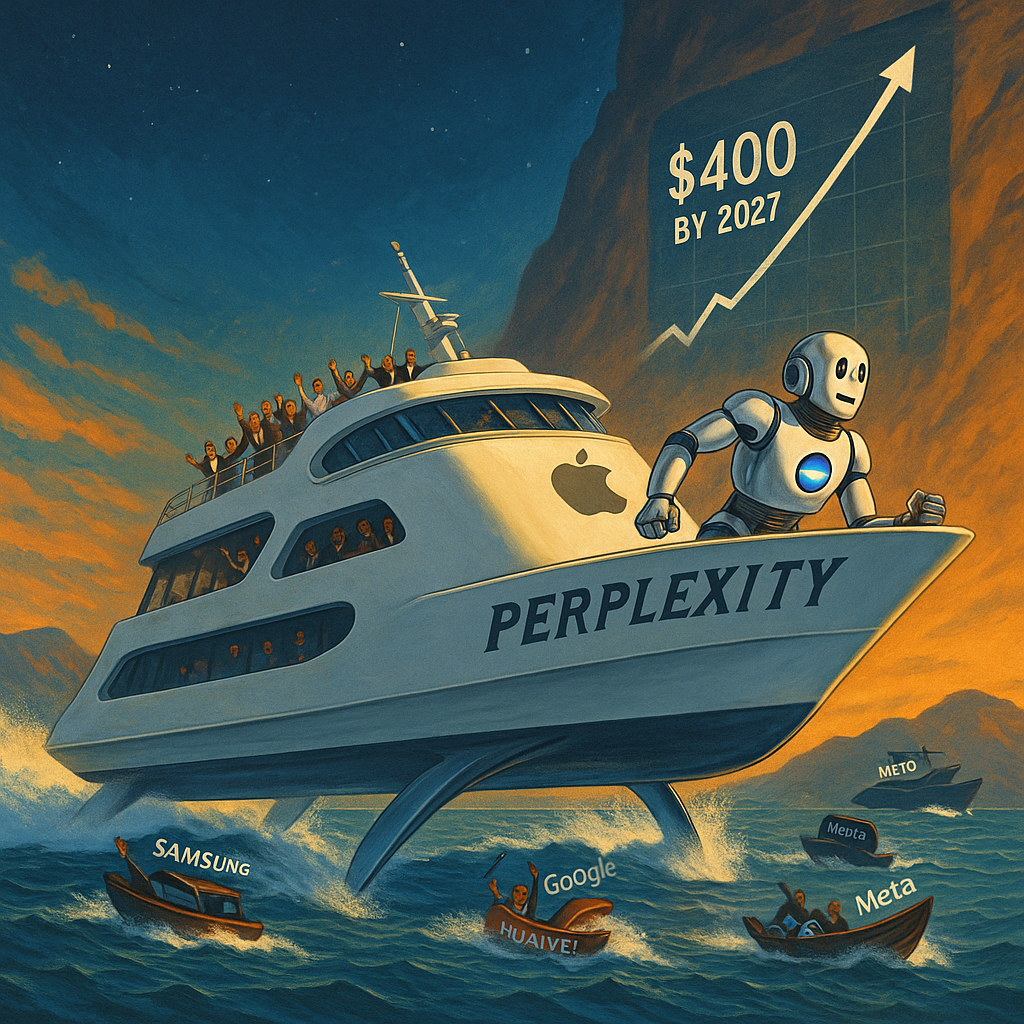
This is why I feel so passionately about this idea now, because it fits, perfectly with Apple’s design. Whether Apple can break its own= mindset free and just do this, is another matter. Sure, it may succeed on its current trajectory, and sure, it may work out “just fine,” but “just fine” is not “insanely great” and being the first amongst equals in the race in, say, 24 months time is not good enough for a company which needs to own the next customer/UX/IT paradigm now being created, and which Apple has dominated by revolutionary strategic moves (as opposed to iterative product line development after launch) since it was first founded.
This is another one of those seminal moments.
The last time Apple dithered, after Windows 95 launched - much mocked and terrible but cheap and cheerful - it spend years trying to do things its own way, only to see it user base implode and its earnings collapse as long-term users switched to cheap PCs still running the same Adobe,Microsoft, and Quark Express creative and productivity tools they’d have to spend 10x as much for on a Macintosh. Suddenly the earth changed under their feet, and they didn’t react in time, almost sending the ship down, and rescued by the ballsiest move of all time, just in time, by buying in NeXT.
‘There is still time, but not much. This is the moment, and Apple knows how this usually ends. Because unless you ship, you’re nothing.”
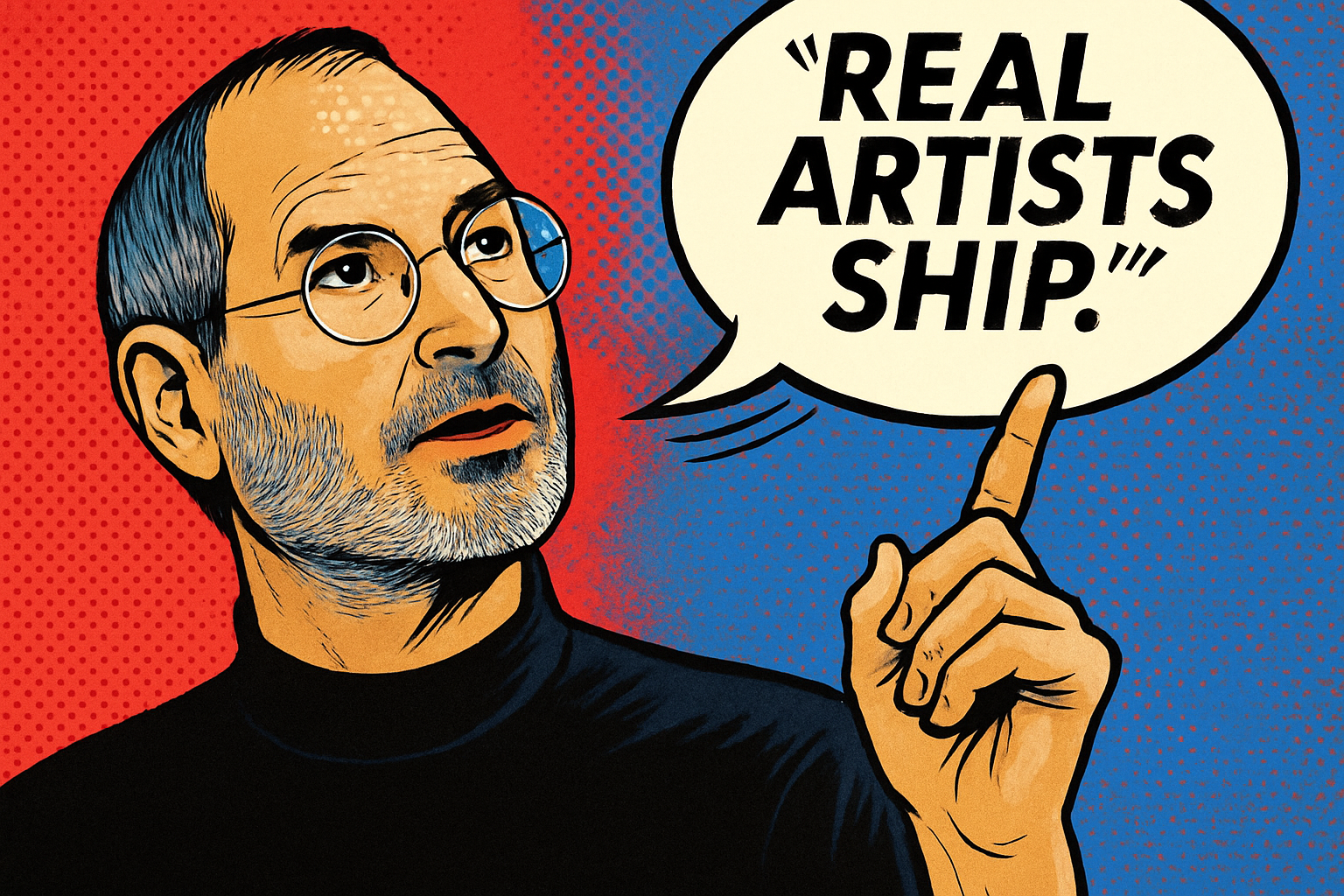
“And that’s how Apple gets to $400 by 2027.’
Like this? Want Apple to sit up and take note?
Send it to Tim Cook. Send it to CNBC. Send it to Bloomberg. Send it to Apple Investor Relations. Send it to Gene Munster. Send it to your mother. Send it to Cramer. Send it to Jon Stewart. Just click one of the action buttons on the sidebar or the base of the screen depending on your device.
This isn’t techno-fetishism or shareholder fantasy. It’s a clear roadmap justified in historical context and the current climate and environment and ever-changing technological landscape, and it skates to where the puck will be, not where it was in 2023.
In fact, it makes sure Apple owns not just the puck, but the whole ice rink and the entire arena. The “Walled Garden” now has a new Stadium attached.
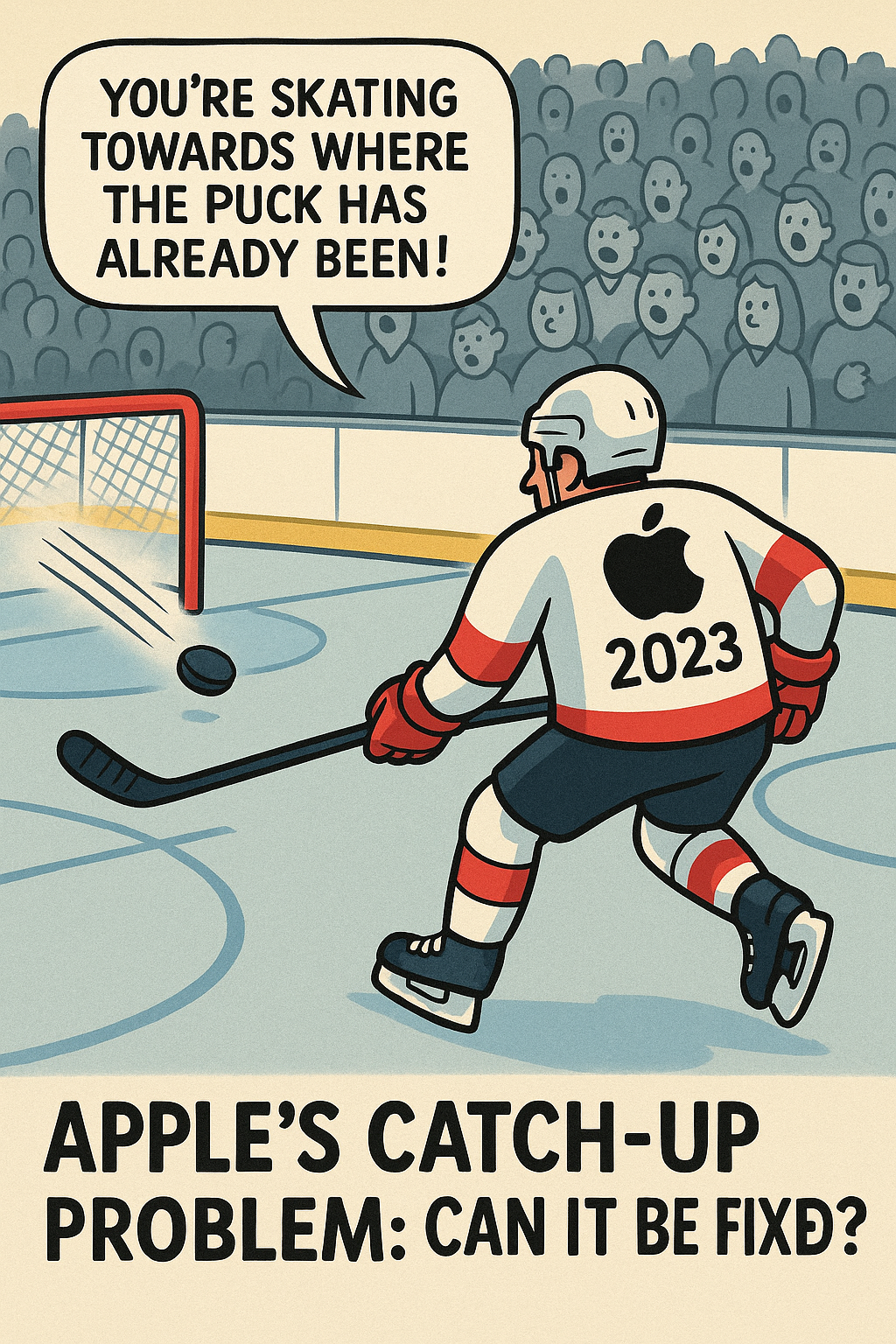
This is what Apple could do, right now, tomorrow.
If they can’t and won’t, the public, and investors must ask: “why won’t they ship?”
.fyi ”that’s a wrap for Monday,”
- Tommo_UK, London, 23rd June 2025
Please, share this newsletter with your friends, colleagues, wealth advisor or liquidator - whatever is your poison - or friendly CNBC anchor. Brian Sullivan, are you still reading?
Tommo_UK, tommo.fyi , London 23rd June 2025



